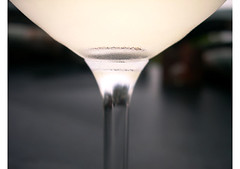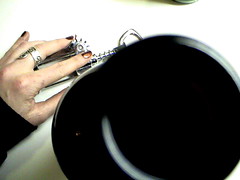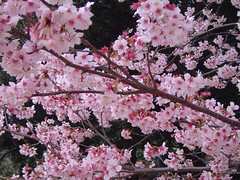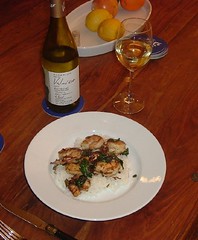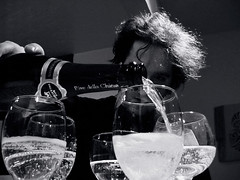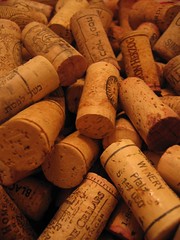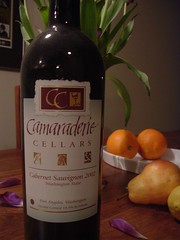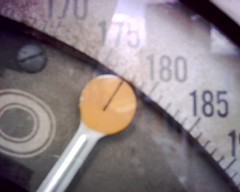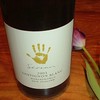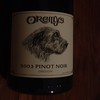Tom, over at
Fementations, noticed the rating system used here and had more than
a few interesting things to say about it. The folks at
Drink Up! and
Lenndevours also chimed in, among others.
It's remarkable how many different, valid points of view there are on the subject. Different people have different goals when rating a wine (or interpreting a rating for that matter), for example:
- To objectively measure the quality of one wine against similar wines
- To try and get as exact a measurement of the pleasure they experience when enjoying the wine regardless of its price
- To somehow come to a truth about the wine, after carefully weighing its various attributes
- ...and so on
The bloggers I've read so far don't neatly fall into any of those categories, but let's just say that we had to pigeon-hole some rating system... let's pick Parker's, since most folks don't mind beating him up a little bit. My guess is that what most folks who rate wines with a system like Parker's are using it because they're trying to get a good measurement of their experience whereas I'd conjecture that wine consumers (newbies especially) are typically assuming that it's an objective measurement of the quality.
Communication, Trade-offs
I, like many others, try to keep a pretty exhaustive set of notes on the wines I taste (naturally not every wine-tasting experience is conducive to this). That set of notes, multiplied by some constant plus the actual experiences I had drinking said wine, is my own internal rating. That is, the quality of wine is simply not quantifiable: human communication isn't a perfect vessel for communicating our experiences and even if it were, the experience we're talking about is still mostly subjective anyway!
We have to make a trade-off when we talk about wine: there is a natural, obvious tension between giving all of the information you can and trying to distill that information into something that's quicker to utilize. I think a simple number like 92 is much too brief. Delivering my set of personal incoherent ramblings verbatim is probably useless in the mind of anyone else. Pulling apart some of the components and placing them on a sliding scale does intuitively make sense, I believe.
Just as we have to make a trade-off when we talk about wine, the average consumer has to make one when buying it. Somewhere between just randomly picking bottles of the shelf and being able to predict what wines will taste like is where I hope typical consumers can get to.
My Personal 'System'
The rating system I use, which is by no means set in stone, is meant to judge wine that would be enjoyed in the day-to-day life of what
I perceive to be the typical consumer. In particular, I'm thinking about folks who are interested in wine, tend to enjoy it, but don't want to invest the time and money it takes to find out what's good and what isn't. After all, while the experience is subjective, there are many commonalities and a set of respectable contraints.
The fact is that the consumer I'm referring to is exceedingly unlikely to be capable of or willing to spend $100/night on wine. Nor is that person going to be able to dodge that fact that wine costs money. I have almost arbitrarily picked a price range that seems accessible based (very unscientifically) on what I see in restaurants, wine shops, grocery stores, and in the homes of friends: $0 - $27ish. I'd guess that the closer you get to $30, the less likely you are to get someone to pickup something new on her way home.
When I say a wine's bouquet is, for me, 4.0, I don't mean that there isn't anything better -- instead, what I'm saying is, "in this price range, for this type of wine, I don't know of many that are significantly better than this." A 4.0 isn't nearly as exclusive for me as, say, a 99 in Wine Spectator.
Also, I do need to make clear on the sidebar that the points in the different categories I rate wine on are not intended to be equally weighted -- that, I hope, can be an exercise for the reader.
Phew. I've learned a lot from this conversation!














